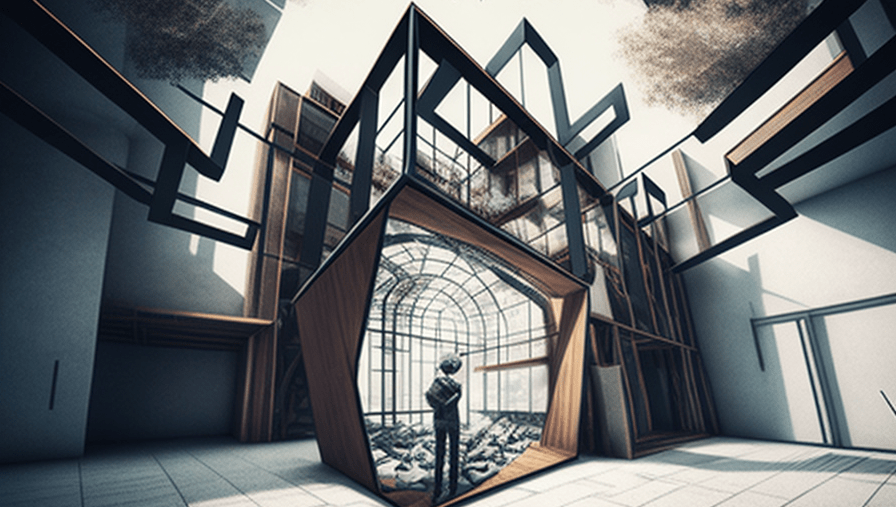No matter how stunning a photograph is, it can never accurately capture the size and feel of a project. With how quickly technology is developing, architects that do not incorporate virtual reality into their design process may soon fall behind.
Virtual Reality is now very much an option for architects of all backgrounds due to the accessibility and affordability of virtual reality head-mounted displays (HMDs) like the Oculus Rift, HTC Vive, or even Google Cardboard.
Certainly, virtual reality headsets are behind in resolution, but it'll all catch up pretty quickly once there's a consumer market and there's demand.

Architecture and virtual reality put together
Long before the structures are actually created, HMDs have the potential to alter how architects and designers conceptualise and express their ideas. A simple 3D simulation of the functional design can be shown to the client. They experience a considerably more realistic feeling of scale, depth, and spatial awareness in the immersive environment than they would in typical renders, scaled models, or animations.
It is simpler to convey design intent properly when a building gives the immersive feeling of being inside it. VR can elicit a positive response in a similar way to physical architecture when clients are unable to comprehend spatial relationships and scale simply looking at a 2D representation.
VR might potentially be utilised to investigate the relationships between rooms early on during the conceptual stage, considering things like how light changes in a room throughout the day or the views from aboveground floors. It is far simpler to comprehend these influences in VR than it is to view a scale model or BIM model on a screen.
The impact of virtual reality on architecture
Until virtual reality technology entirely replaces more conventional architectural methods, there are still some enhancements that need to be addressed. The effectiveness of an architect’s usage of VR will be significantly influenced by factors including speed, graphics, and the capacity to allow designers to change plans in real time.
How architects share their work with clients and how correctly they communicate are already being impacted by these technologies.
This explanation of virtual reality in architecture may seem very brief. It will surely be useful as a presenting tool, giving clients a sense of how a design would seem at scale and from a more visceral perspective. But how would it affect the work flow of an architect?
To be truly useful, VR technology must enable users to completely engage with a suggested model, including the ability to move objects around the room, open and close doors and windows, and turn on and off lights. The client’s comments will then need to include this degree of interactivity; specifically, what areas of the design did the client find particularly pleasing? where did they have difficulty engaging and interact?
The final step is to record and incorporate this visual feedback into the design.
And while this amount of in-depth feedback might create one or two obstacles to successfully implementing VR for architecture and design (more on this later), the technology’s accessibility shouldn’t present any such issues.
Due to the widespread use of smartphones, it is now possible to create virtual reality programs that are simple to download and set up on a client’s phone. In other words, instead of spending money on pricey technology like a dedicated VR headset, a cheap VR headset (like Google Cardboard) may be offered along with the necessary floor plans and schematics.
The most recent smartphone models have sufficient processing power to offer VR-quality graphics, and thanks to the built-in accelerometers, they will be able to detect movement as a client navigates their way through the virtual world.
In virtual reality, it's more about capturing and creating worlds that people are inhabiting. You really are a creator in the way the audience lives within the world that you are building.
Conclusion:-
Virtual reality technology aids in building and optimising linkages between various locations, light, construction, and materiality used in a project from the conception stage through to execution. So, the use of virtual reality in architecture is poised to inspire a proactive moment of making design usable and effective by all.

